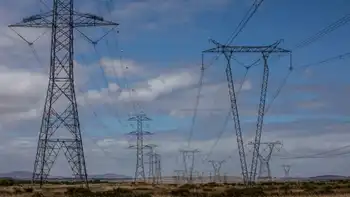Long road ahead for EVs in Canada
- Only one week after the much-hyped rollout of electric cars at the Los Angeles Auto Show, Canadian news media carried reports about how Ontario electricity costs are expected to double over the next 20 years.
That forecast must have Ontarians questioning whether buying an electric car is a good idea. But there are other questions all Canadians would be wise to ask about electric cars, and the electricity needed to power them. LetÂ’s put those questions into perspective.
Even the staggering electricity rate increases announced by Ontario would not generate nearly enough power to handle a large auto-recharge load, nor could already stretched power grids handle it, either. Hydro-Québec recently said its distribution grid could accommodate a meagre 1,000 car plug-ins. In other provinces also, costly retooling of power generation, mainline transmission and local distribution grids would be required.
Wind and solar generate less than 1 per cent of CanadaÂ’s power supply, and most provinces have subsidies aimed at increasing that portion. The most spectacular example of the sky-rocketing cost of subsidies can be seen in Ontario, where the Liberal government forces consumers to pay 16 times as much for solar power, and three times more for wind, as the current average electricity rate. OntarioÂ’s 20-year power plan calls for $23-billion in subsidies to the wind and solar industry, supposedly allowing coal-fired power to be phased out. But its own numbers show that with wind and solar capacity available less than 30 per cent of the time, these costly projects still wonÂ’t bring about the end of coal. Meanwhile, electricity consumers will be hit with price increases of 46 per cent over the next five years, making Ontario industry uncompetitive with almost all provinces and American states. No wonder Premier Dalton McGuintyÂ’s green dream is turning into a nightmare as an election looms.
That depends on how the electricity is generated. Water generates most of the electricity in Newfoundland and Labrador, Quebec, Manitoba and B.C., while Alberta and Saskatchewan generate nearly all power from coal and natural gas. Overall, about 75 per cent of CanadaÂ’s electricity comes from water and nuclear power, and 25 per cent from fossil fuels. When measured by fossil-fuel emissions, use of electric cars in Canada can generally be considered green. The situation is the reverse in the United States, where fossil fuels, mainly coal, generate 75 per cent of electricity. So operating an electric car there would account for more fossil-fuel emissions than a conventional gasoline-powered vehicle thus making GMÂ’s Chevy Volt a tougher sell to eco-conscious consumers, the target market for electric vehicles.
Besides of their high price tag, limited range and the inconvenience of long charging cycles, thereÂ’s another factor that even the greenest Canadians need to consider before buying an electric car: our northern climate. Anyone who has had trouble starting a car in cold weather knows that battery performance plummets with temperature. In our dark, cold winters, we also need battery power to heat the car and run headlights. The combined result is a much shorter driving range than theyÂ’ll be touting in the electric-car showroom.
The green-car race is imploding as beleaguered citizens, struggling to deal with tough economies, see their electricity rates soar and expensive wind and solar power missing in action when most needed. Other jurisdictions are rapidly changing direction, but Ontario keeps whistling merrily in the wind, bound for uncompetitive green oblivion.
Just recently, U.S. Energy Secretary Steven Chu said the development of an electric-car battery to be competitive with the internal combustion engine might be five years away. “The storage capacity of [electric] car batteries needs to be increased by six or seven times, their lives need to be extended by 15 years, and their cost needs to be reduced by a factor of three,” he said at the UN climate conference in Cancun, Mexico.
I think IÂ’ll sell my GM stock while IÂ’m ahead.
Related News

California Faces Power Outages and Landslides Amid Severe Storm
CALIFORNIA - California is grappling with a dual crisis of power outages and landslides following a severe storm that has swept across the state. The latest reports indicate widespread disruptions affecting thousands of residents and significant infrastructure damage. This storm is not only a test of California's emergency response capabilities but also a stark reminder of the increasing vulnerability of the state to extreme weather events.
Storm’s Impact on California
The recent storm, which hit California with unprecedented intensity, has unleashed torrential rain, strong winds, and widespread flooding. These severe weather conditions have overwhelmed the state’s infrastructure, leading to significant power outages…




